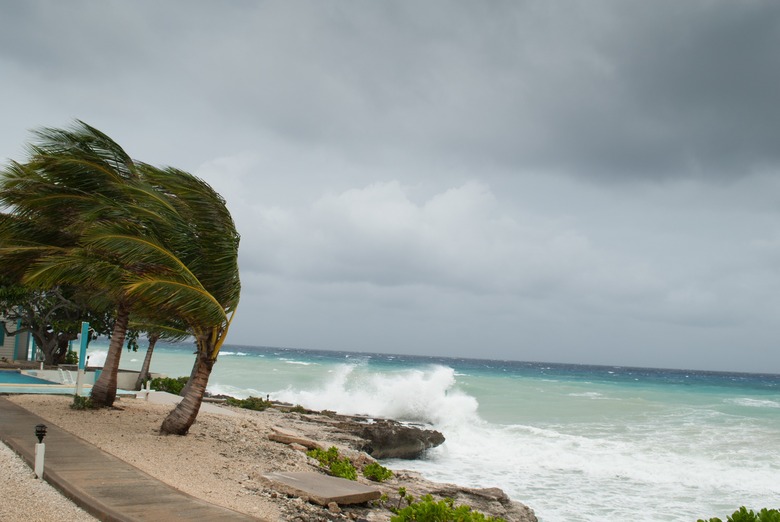At What Speed Does Wind Become A Hurricane?
Hurricane strength is rated according to the Saffir-Simpson Hurricane scale of strength. The strongest winds in a hurricane occur on the right side of the eyewall. While wind speeds usually decrease within about 12 hours after landfall, many storms cause much inland damage.
Category 1
Category 1
Storms reach hurricane strength when winds reach 74 mph. Storms with winds from 39 to 73 mph are categorized as tropical storms.
Category 2
Category 2
Category 2 hurricanes have winds speeds from 96 to 110 mph. Damage in these storms usually includes roof, window and door damage and extensive damage to mobile homes. Trees may be blown down.
Category 3
Category 3
When winds reach 111 to 130 mph, the hurricane becomes a Category 3 storm. Small buildings may be structurally damaged, and mobile homes destroyed. Poorly constructed signs will be destroyed and large trees blown down.
Category 4
Category 4
Category 4 hurricanes have winds that range from 131 to 155 mph. Small residences may suffer complete roof structure failure in these storms. Additionally, beach erosion is extensive. According to National Geographic News, Hurricane Katrina was a Category 4 storm when it made landfall in 2005.
Category 5
Category 5
When wind speed exceeds 156 mph, it is a Category 5 hurricane. Many residences and commercial and industrial buildings will experience complete roof failure in these storms. Heavy flooding is typical with massive evacuations required. Hurricane Andrew, which made landfall in Florida in 1992, was a Category 5 hurricane.
References
Cite This Article
MLA
Deiterich, Ann. "At What Speed Does Wind Become A Hurricane?" sciencing.com, https://www.sciencing.com/speed-wind-become-hurricane-5805814/. 22 November 2019.
APA
Deiterich, Ann. (2019, November 22). At What Speed Does Wind Become A Hurricane?. sciencing.com. Retrieved from https://www.sciencing.com/speed-wind-become-hurricane-5805814/
Chicago
Deiterich, Ann. At What Speed Does Wind Become A Hurricane? last modified March 24, 2022. https://www.sciencing.com/speed-wind-become-hurricane-5805814/
